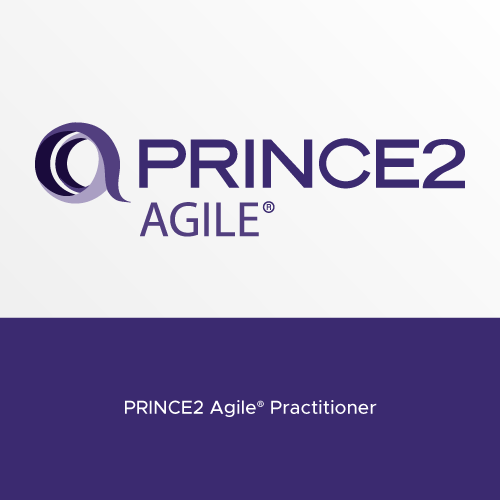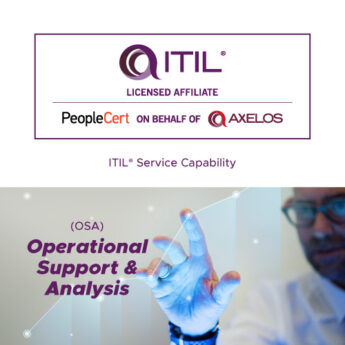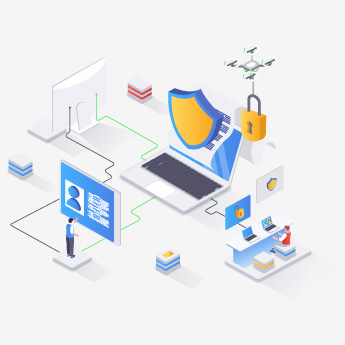Module 1: Understand the basic concepts of common Agile methods
- Explain the differences between projects and BAU (Business as usual)
- Describe agile and its common approaches, how and why Agile approaches have developed and where they are used
- Describe the history of Agile, it’s contrast to the waterfall way of working and how the Agile Manifesto fits in
- Describe the different levels of Agile maturity and well-known Agile frameworks
- Describe behaviours, concepts and techniques that characterize Agile
- Define the PRINCE2 Agile® view of ‘Agile’
- Describe Kanban, the Kanban method and its six general practices, including the use of Cumulative Flow Diagrams (CFDs)
- Describe the core concepts of Lean Start-up
- Describe the use of workshops
- Describe how to transition to Agile
- Define Scrum theory and explain the nature of the Scrum team, Scrum events, Scrum artefacts and Sprints
Module 2: Understand purpose and context for combining PRINCE2® and Agile
- Describe the complementary strengths of PRINCE2® and the Agile way of working
- Define who can benefit from using PRINCE2 Agile® and in what contexts/situations
- Define the make-up of PRINCE2 Agile® (frameworks, behaviours, concepts, techniques, focus areas)
- Explain the eight ‘guidance points’
- Explain how PRINCE2® controls and governance can enable Agile to be used in many environments
- Describe what a typical PRINCE2® ‘project journey’ looks like in an Agile context
Module 3: Apply and evaluate focus areas to a project in an Agile context
- Explain the purpose and use of the Agilometer throughout a project
- Describe the six sliders used on the Agilometer, explain their significance and how to improve them
- Describe in detail requirements terminology, decomposition and prioritization, including MoSCoW and Ordering
- Explain how requirements prioritization is used
- Explain the rich communication focus area, its importance and its key techniques
- Explain how to manage frequent releases and the benefits of ‘failing fast’
Module 4: Fix and flex six aspects of project in an Agile context
- Describe how to use the ‘hexagon’ in relation to the six aspects of project performance
- Explain the use of tolerances in terms of what to ‘fix’ and what to ‘flex’ in relation to the six aspects of project performance
- Describe in detail each of the five targets that underpin the use of the hexagon
- Explain why the ‘fix and flex’ approach is good for the customer
Module 5: Apply or tailor PRINCE2® principles, themes, processes, and management products to a project in an Agile context
- Describe in detail the five PRINCE2 Agile® behaviours (Transparency, Collaboration, Rich Communication, Self-Organization, Exploration)
- Explain that Agile needs to be incorporated in all seven PRINCE2® processes and all seven themes but that the amount appropriate to each will vary depending on the project context
- Describe the two common Organization roles of Scrum master and Product owner
- Explain how to adjust roles, including the use of specialist roles, and the options for team organization in a project
- Define the make-up of a typical delivery team
- Describe servant leadership, its use and importance
- Describe how to define Working Agreements
- Describe quality setting techniques including ‘definition of done’ and the use of acceptance criteria
- Describe quality testing, quality checking and management techniques
- Describe approaches to planning and typical planning techniques
- Describe approaches to risk and how Agile concepts mitigate many typical risks
- Describe how blending PRINCE2® with Agile approaches controls, responds to, and minimizes the impact of change, including risk management and configuration management
- Describe how empowered self-organizing teams handle change dynamically within set tolerances
- Describe common feedback loops and their importance
- Describe progress monitoring techniques including use of ‘work in progress’ boards, burn charts, information radiators
- Describe in detail Agile techniques that may apply to each PRINCE2® process including Cynefin
- Describe how to flex the ‘Direct a Project’ stage and the benefits of collaborative working
- Describe how to ‘manage by exception’ with emphasis on empowerment, quantity of deliverables, rich information flows and value of deliverables
- Explain why PRINCE2® ‘stages’ may not be required, including the use of timeboxes and Scrum of scrums
- Describe typical output mechanisms when ‘Controlling a Stage’ and ‘Managing a Stage Boundary’
- Describe the use of retrospectives and how to make them effective
- Describe approaches to managing product delivery including Scrum and Kanban
- Explain how to define Work Packages, Product Descriptions, quality criteria and tolerances
- Give guidance on behaviours, risk and the frequency of releases
- Explain how to manage stage boundaries and the similarities between a stage and a release
- Explain how to assess quantity, quality and benefits of stage deliverables
- Explain how to effectively close a project, including evaluation of the use of Agile
- Describe how to tailor PRINCE2® products, including Work Packages, Highlight Reports and Checkpoint Reports
- Describe in detail Agile techniques that may apply to each PRINCE2® theme including requirements, defining value and user stories
- Describe guidance on the use of contracts
- Describe PRINCE2 Agile® delivery roles
- Explain how to use the Health Check
- Describe the fundamental values and principles of Agile
Outline tips for the PRINCE2 Agile® project manager





